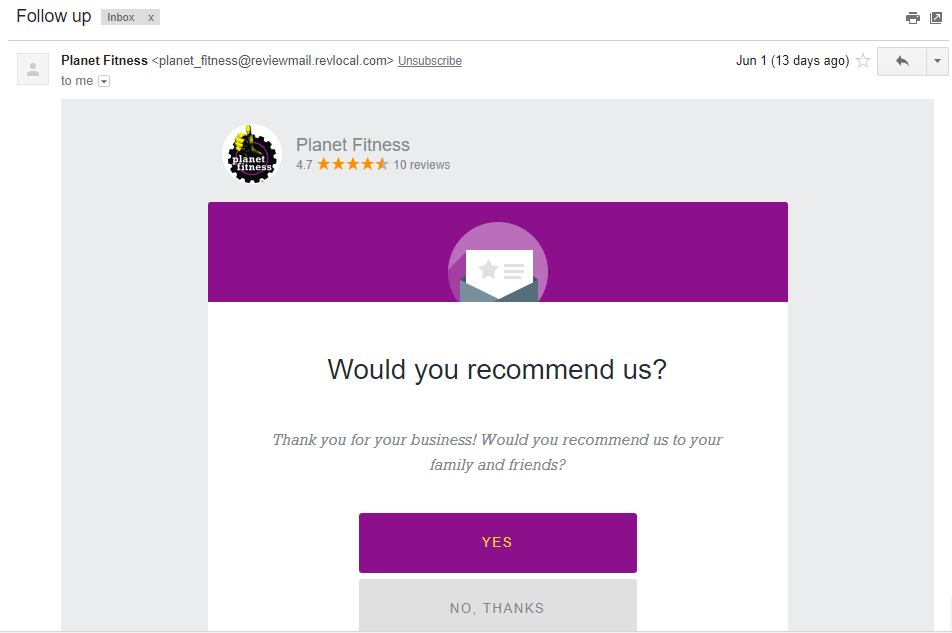Have you ever been asked for your E-mail address to be put on file for a particular company, and all you could think about is “Oh, God…spam mail!” It’s an icky feeling to know that you’re sort of trap in a never ending cycle of emails about promotions and deals readily handed to you via E-mail.

OR
Those weird text messages or push notification that pop up out of nowhere! Like:
“50% OFF! GET YOUR DEALS RIGHT NOW BEFORE IT’S OVER!”
That..can get pretty annoying. The good news is that companies now a day allow you to opt out of individual communications channel. So if you don’t want an Email or a text message from the business, you won’t get one. But why do companies even do this if they have a way out for the customer? (…maybe because it’s the law.)
But the more important question to ask is; what if all of the communication channels that you currently have in your marketing tool shed is irrelevant to you customers. What we mean is with changing attitudes and behavior, no customer’s preferences are alike (well maybe there are overlaps), so why should you treat your communication strategy with a broad stroke?
Are you adaptive enough to cater to you customer’s preference?
We find that business communications model has been dictated by the business and are given options to their customers in a “take it or leave it” kind of way (in a nicer tone of course.) Meaning that businesses don’t really know how to fully use their new comms channel toys and they’re just doing whatever sort-of works. And in our opinion, if you don’t know how to properly use those digital comms channels (like text, push, email etc.) you’re going to be behind the curve because people (big and small business…even customers) are starting to catch on.
Even for small businesses?
In our opinion…yes, at least you can be!
You’re a small business, there’s no reason for you to fall into the trap of the big companies by doing what they’re doing. That means that you have an edge…because you already know what their doing isn’t fantastic, it’s your chance to fix that in your own communication strategy. Just because you’re small doesn’t mean you can’t be smart. Also, you don’t have to rip apart your marketing infrastructure, but you get to build a new one the right way.
The Most Popular Choices for Today Are:

Most companies use Email, Text-Messaging, and Push Notification because it is to some extent a suitable communications channel. But what is more important, is that it is easy to execute with the right tech expertise.
Of course, on paper, these three channels sounds great; a way to get in touch with you customers via their phones.
The problem with these three channels though; there are so many ways to kind of F* this up and potentially be an annoyance to any loyal customers or potential customer of in your particular segment.
Here’s are some questions that potential customers might ask themselves about the way you send the message to them:

It boils down to three components, ranked and colored by easiest execution to hardest in our opinion:
Preference
Context
Timing
Having these three principles on how to approach direct customer communication is important because you never want to be perceived as broadcasting…You want to be recognized as an individualized message that is catered to the customers.
But of course, it is easier said than done. But we can give you some idea on how to muddle through this.
———————————————————–
Preference:
This one is the easiest one in our opinion to execute. When people sign up or become one of your members in your business ecosystem only ask them how they want to be communicated.
A lot of businesses don’t really give you a choice on how to be communicated which is a strange concept for us in this day and age. If your business has a good marketing head, chances are you are already thinking about several communications channel, and have executions in them. So why not give the individual customers a choice on how to be communicated with.
“Don’t Dictate you’re marketing channel process, let the People decide for themselves!” 😉
Don’t dictate how you will talk to you customers. Democratize the process and ask the customers which channel (either Email, text, or whatever you have) they would like to hear from you.
———————————————————–
Context:
Context is the middle ground regarding execution because it has a lot to do with your marketing infrastructure.
When we talk about Context, we mean that different users have different preferences to the content. Some people like to see colorful pictures whereas others have a preference to a short but to the point text message/push. Don’t forget about the actual context of the content though (how triggering is the content?)…but that is something that your marketers should be able to figure out.
Knowing you’re customer’s preference to the message context is super simple…just ask them and keep whatever preference they have and keep it on file.
Delivering the content with the relevant context, however, that gets tricky depending on how to advance the marketing infrastructure of your business is. Whether you have a graphic designer or a copy expert your business can cater to everyone’s needs…Or no marketers with those skill sets, this is where you might have to make some decisions.
Message context isn’t a difficult concept, it’s about adaptive to your customers and whether your company is ready for the challenge or not.
———————————————————–
Timing:
Timing gets a little tricky without the right expertise. When is a good time to send out your message? Are you going to be annoying to them or are you going to hit the sweet spot and remind them that your company is having a sales/new product (…or whatever.)
We think this is a difficult thing to nail down because everybody has different kinds of schedules and therefore is not susceptible to the same kind of timing.
Take, for example, Bill and Jane:
At 5 o’ clock
Bill: is getting off work and is ready to have a beer with his buddy but…he needs just a little push or trigger for him to go to your establishment.
Jane: on the other hand is pulling an all-nighter at the office and therefore does not care about anything but her work. A drink is the last thing on her mind, in fact, any message you send her would just be deleted because it’s spamming her.
In this example, Bill is ripe to be messaged to but Jane is not, So how do you do it? Send Bill the message but leave Jane out? That is the trick of the century, and but we of Wali adamantly believe that the right AI powered by good data can solve this problem automatically for you, but a little bit more on that below.
———————————————————–
Timing with AI
We think that this is a perfect issue for an AI algorithm to solve. While we don’t predict that the AI can be perfect (at this point in AI tech, no one should claim their AI is excellent), what it can do is optimize message timing. So that it seems like you are catering to your customers.
Without giving away all of our trade secret thought processes, we think that by collecting certain key data points we can predict when each individual customers would be receptive to your business’s messages.
It will then batch up all of the important customers at a particular time and send out the message; this process, of course, will be continuous and occur throughout the day. You as the business owner will be able to control if the message gets sent out or not, but we give you a set of recommended times of the day catered to customers who might be most engaged to the message timing.
This timing concept though is still in development for us. So forgive us for not giving out too many juicy details because we’re still working on it! 😃
In any case, we thank you for reading yet another one of our blogs!

